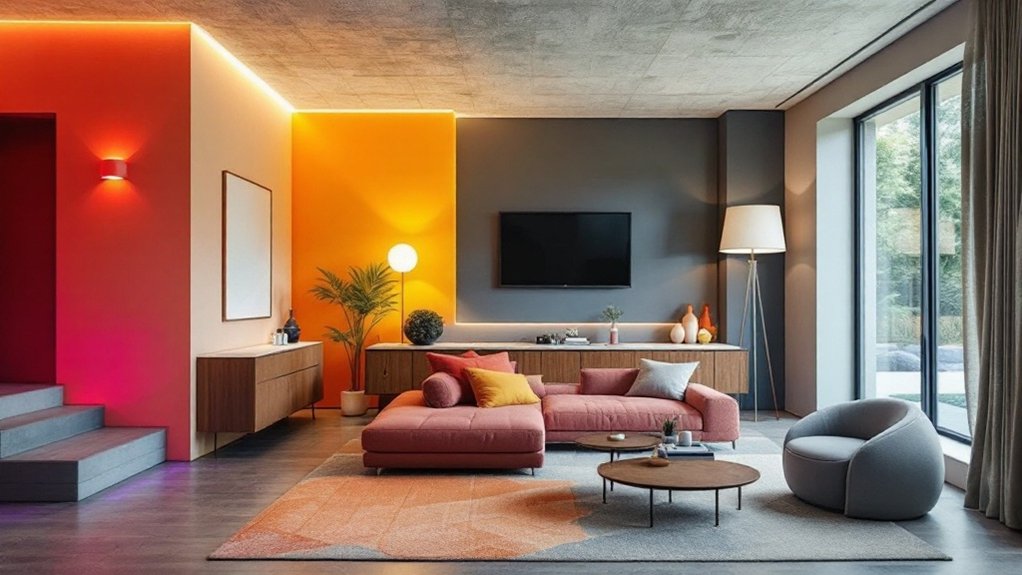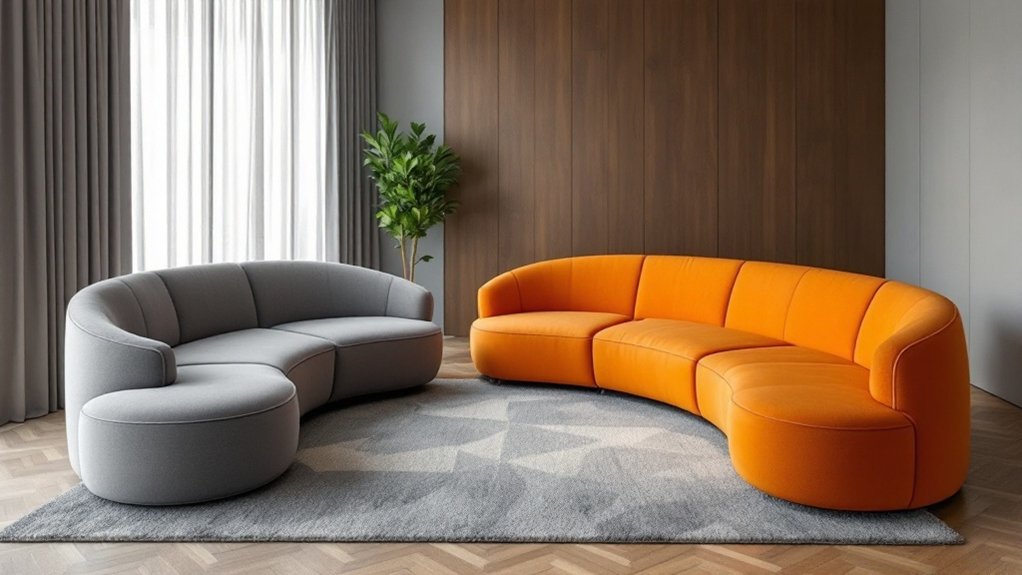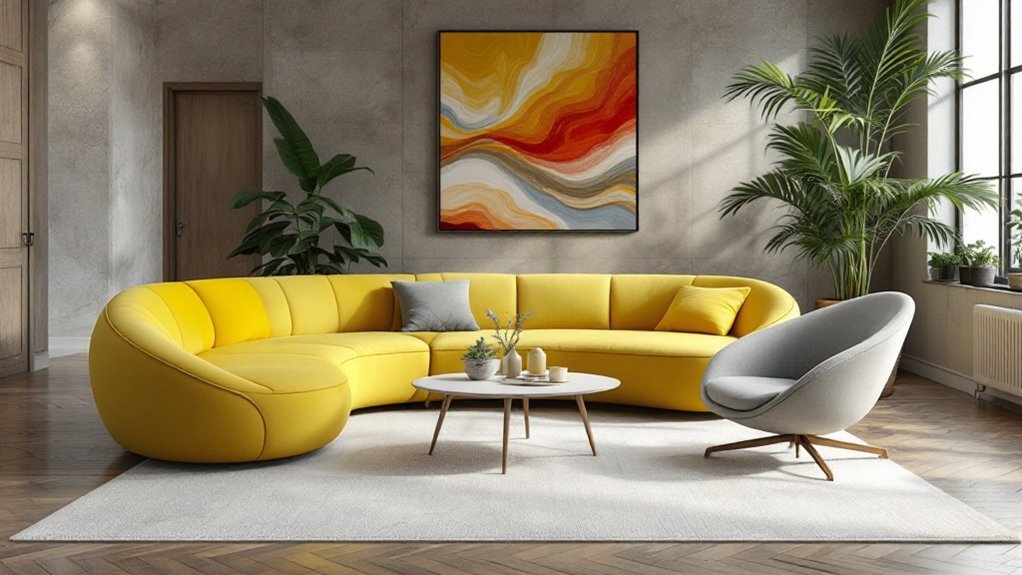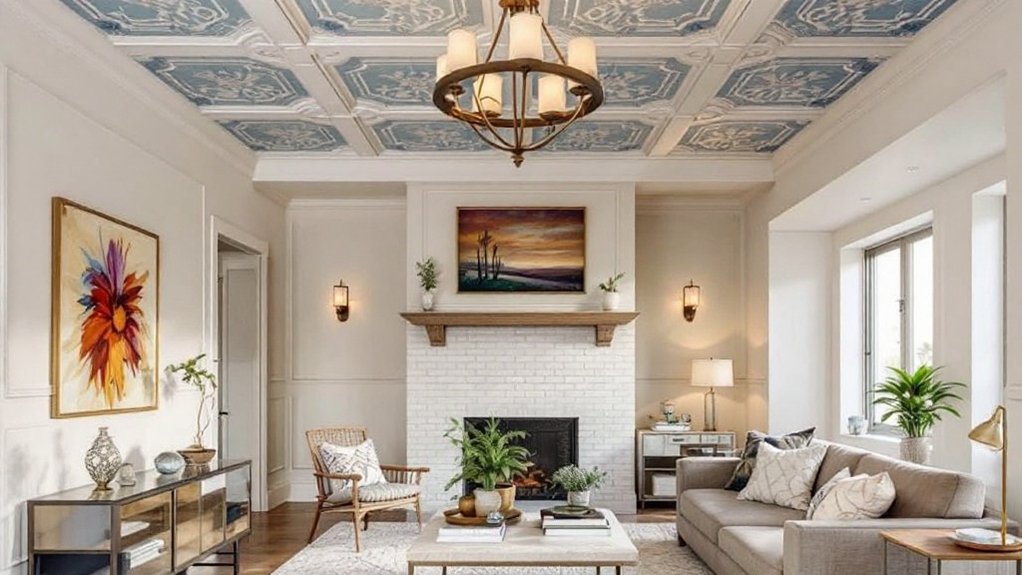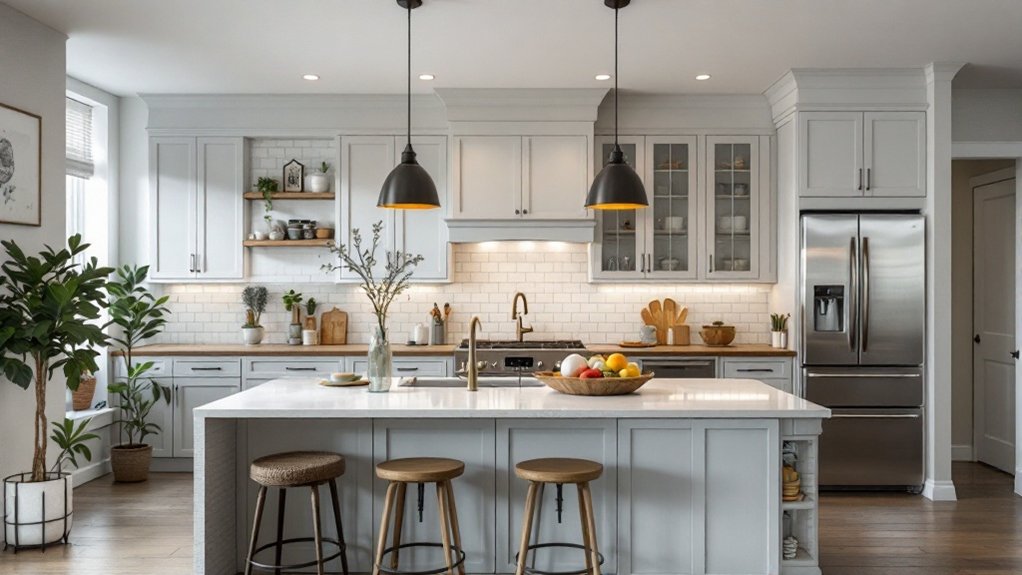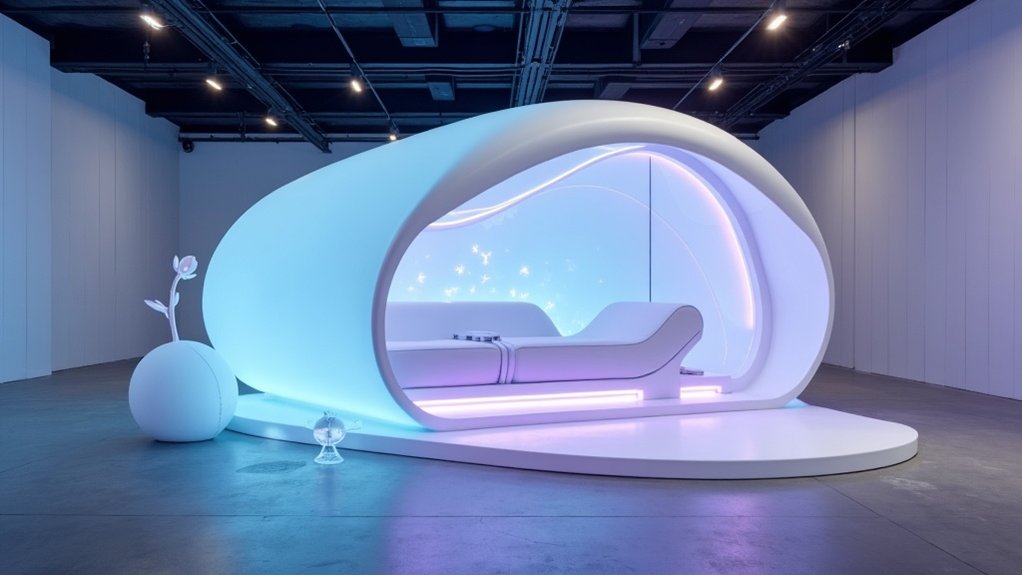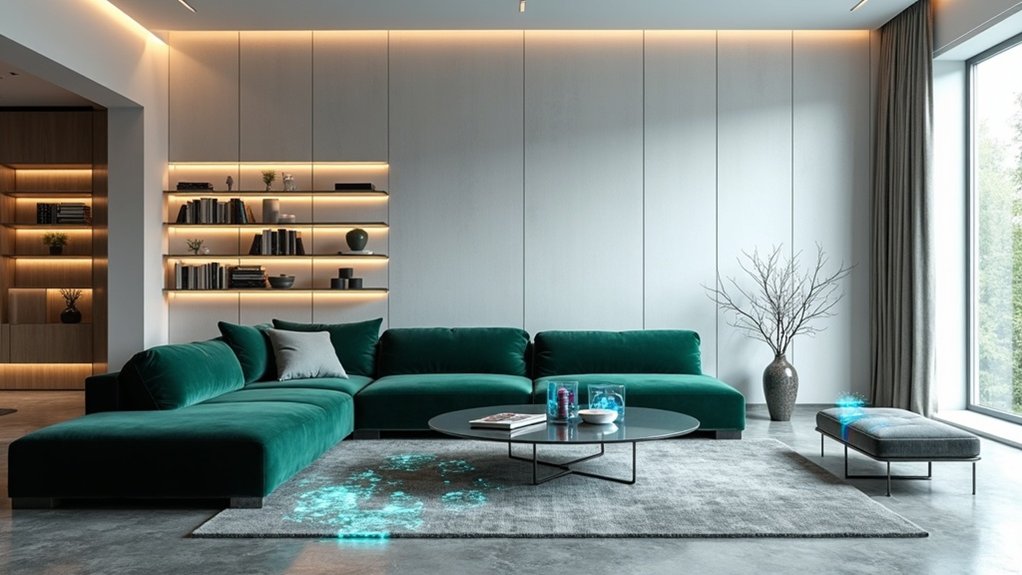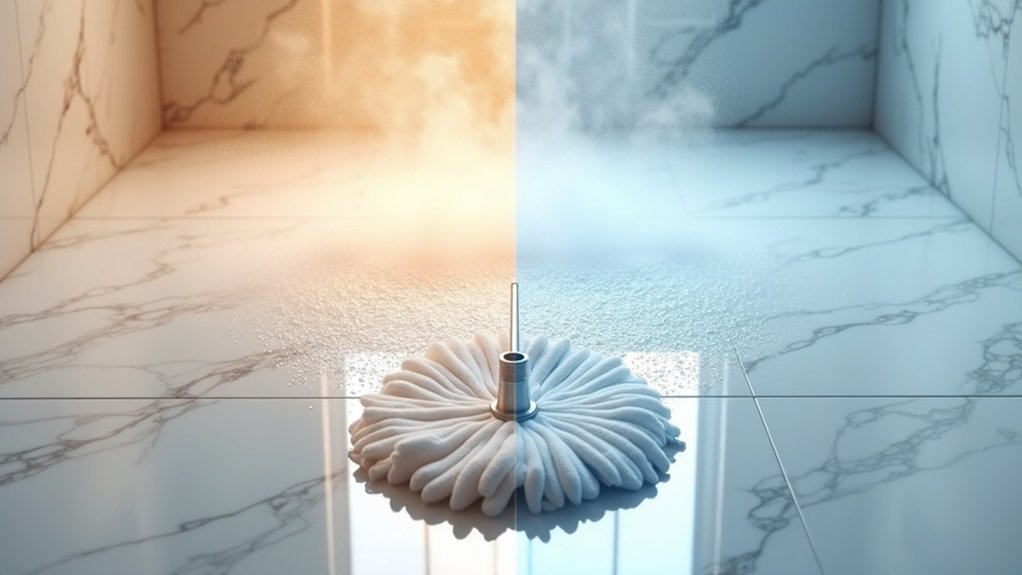Modern homes maximize space through innovative design solutions that blend functionality with technology. Smart storage systems like pull-out pantries and under-bed compartments transform unused nooks into practical areas, while multipurpose furniture adapts to changing needs. Custom closet organizers, modular shelving, and two-tier lazy susans optimize vertical space and accessibility. These intelligent design features, combined with sustainable elements like LED lighting and smart controls, create living spaces that effortlessly accommodate contemporary lifestyles. The intersection of design innovation and modern living offers countless possibilities for space optimization.
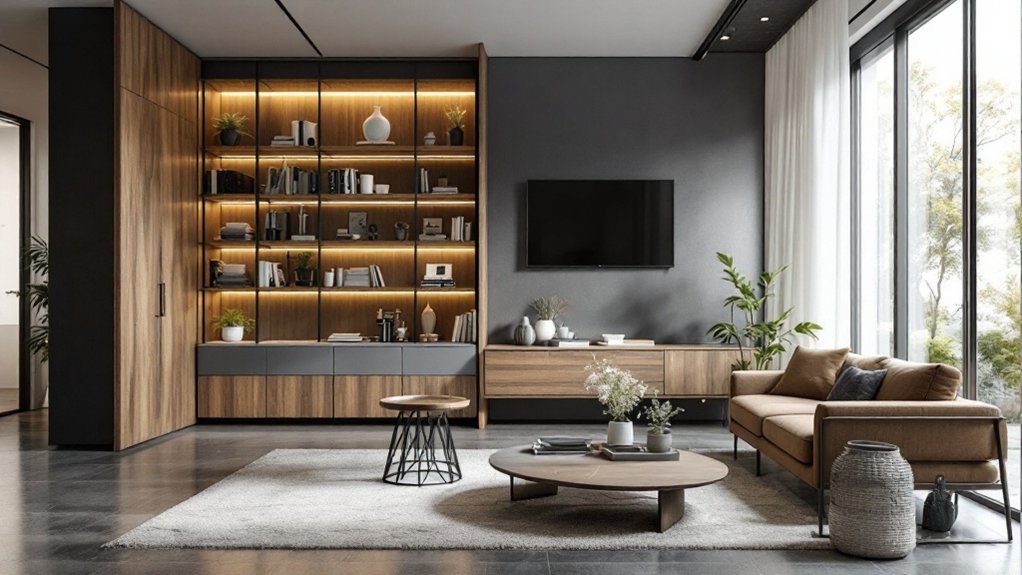
As modern living spaces continue to evolve, homeowners are increasingly turning to innovative design solutions that seamlessly blend functionality, technology, and sustainability. The integration of multipurpose furniture and smart storage solutions has revolutionized how people maximize limited square footage, with items like expandable tables and Murphy beds enabling rooms to transition effortlessly between different functions throughout the day. Open-concept living rooms create inviting spaces that naturally facilitate interaction and connection between family members of all ages.
Smart home technology has become a cornerstone of contemporary living, offering unprecedented control over residential environments. From app-controlled lighting systems that optimize energy consumption to intelligent thermostats that learn household patterns, these innovations improve both comfort and efficiency.
Smart technology transforms modern homes into responsive ecosystems, where automated controls enhance daily comfort while maximizing energy efficiency.
"The integration of smart home features isn't just about convenience," notes interior technology specialist Sarah Chen. "It's about creating living spaces that actively respond to residents' needs while minimizing environmental impact."
Storage solutions have evolved beyond traditional closets and cabinets, incorporating sophisticated systems that maximize vertical space and utilize previously overlooked areas. Custom closet organizers, under-bed storage, and pull-out pantries transform unused nooks into functional storage spaces, while labeled bins and modular shelving systems guarantee organization remains intuitive and accessible. Modern organizers like 2-tier lazy susan turntables are revolutionizing corner cabinet accessibility and maximizing previously wasted space.
Modern homes are likewise embracing designs that prioritize airflow and ventilation, incorporating zoned HVAC systems and strategic window placement to optimize natural air circulation. These features work in concert with air purifiers and smart sensors to maintain healthy indoor environments while reducing energy consumption.
Accessibility has emerged as an essential consideration in contemporary home design, with features like step-free entryways and adjustable-height countertops accommodating multigenerational living. These adaptable spaces support diverse needs while maintaining aesthetic appeal, proving that functional design need not compromise style.
Sustainability remains at the forefront of modern home innovation, with LED lighting, high-performance insulation, and water-saving fixtures reducing environmental impact. These elements, combined with smart technology and thoughtful space utilization, create homes that are not only efficient and comfortable but equally prepared to meet the evolving demands of future generations.
Frequently Asked Questions
How Much Does Professional Space Optimization Consulting Typically Cost?
Professional space optimization consulting costs vary significantly based on project scope and consultant expertise.
Hourly rates typically range from $150 to $1,000, while project-based fees commonly fall between $500 and $50,000. High-profile firms may charge upwards of $500,000 per engagement.
Factors affecting pricing include consultant experience, location, project complexity, and fee structure, with 31.37% of consultants preferring project-based pricing over hourly rates (23.38%) or value-based models (17.30%).
Can Hidden Storage Solutions Be Installed in Rental Properties?
Hidden storage solutions can certainly be installed in rental properties, with certain limitations.
Non-permanent options like adhesive-mounted floating shelves, over-the-door organizers, and multipurpose furniture are ideal as they don't require structural modifications.
While built-in solutions such as custom closet systems or shelving may offer more storage capacity, these typically require landlord approval.
Renters should prioritize removable solutions that won't compromise their security deposit or violate lease agreements.
What Tools Are Needed for DIY Hidden Storage Projects?
Vital tools for DIY hidden storage projects include both basic and specialized equipment.
Core measuring tools like tape measures and levels guarantee precise installation, while cutting implements such as handsaws and jigsaws facilitate custom fabrication.
Assembly requires drills, screwdrivers, and various fasteners, complemented by specialized hardware like concealed hinges and magnetic catches.
Finishing tools, including sandpaper and appropriate brushes, help achieve a professional appearance that seamlessly integrates with existing décor.
How Long Does It Take to Implement Smart Storage Solutions?
The implementation timeline for smart storage solutions varies significantly based on project scope and complexity.
Small residential installations typically take 2-4 weeks from planning to completion, while large commercial projects may extend to six months or more.
The process involves four key phases:
- initial assessment (1-4 weeks),
- technology selection (2-8 weeks),
- physical installation (1-7 days for homes, several weeks for commercial),
- and system optimization (up to six months post-installation).
Are There Weight Limitations for Wall-Mounted Hidden Storage Units?
Wall-mounted hidden storage units do have specific weight limitations that depend on several critical factors.
Standard floating shelves typically support 45-50 pounds per wall stud when properly anchored, while specialized heavy-duty installations can handle up to 130 pounds for 2-foot units.
The ultimate capacity depends on mounting method, wall material, and bracket quality.
For safety, installers should always verify manufacturer specifications and guarantee proper stud anchoring during installation.
